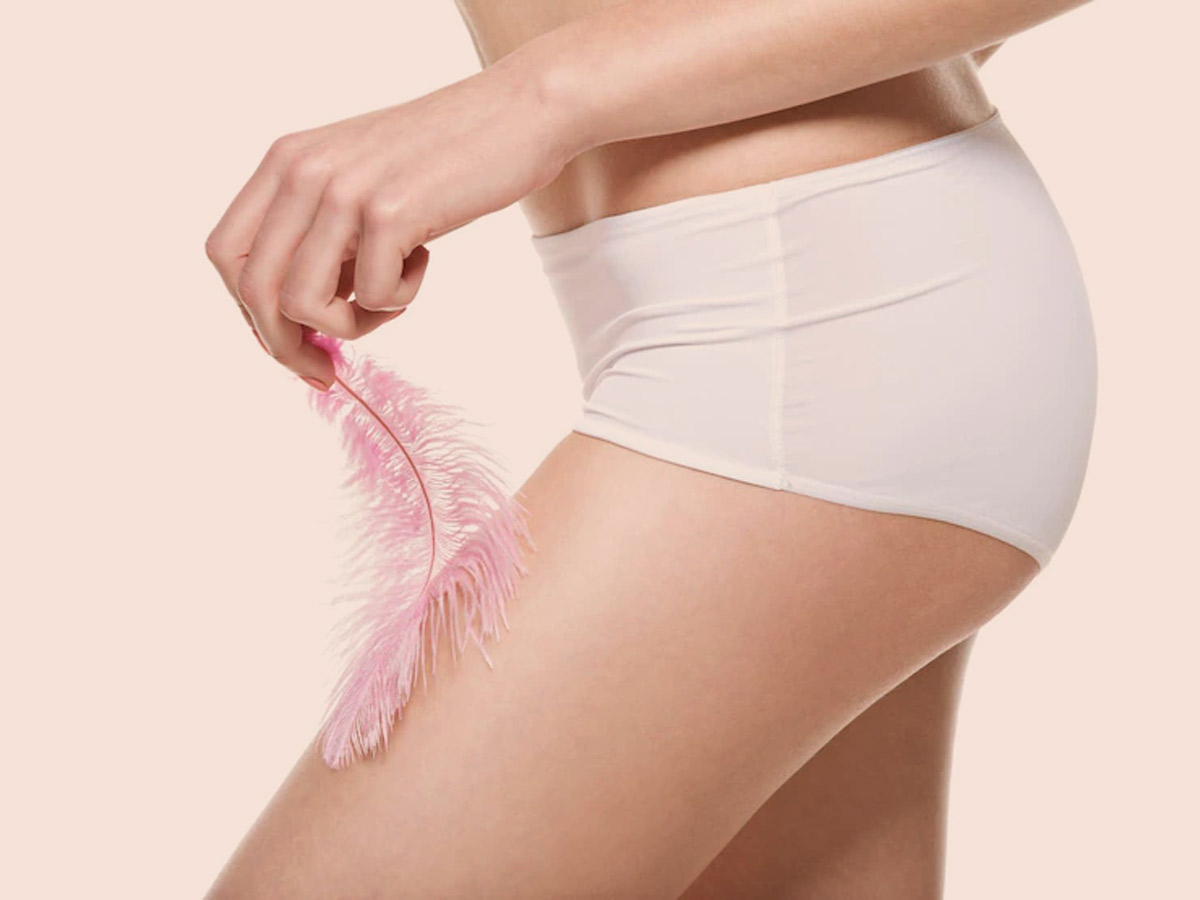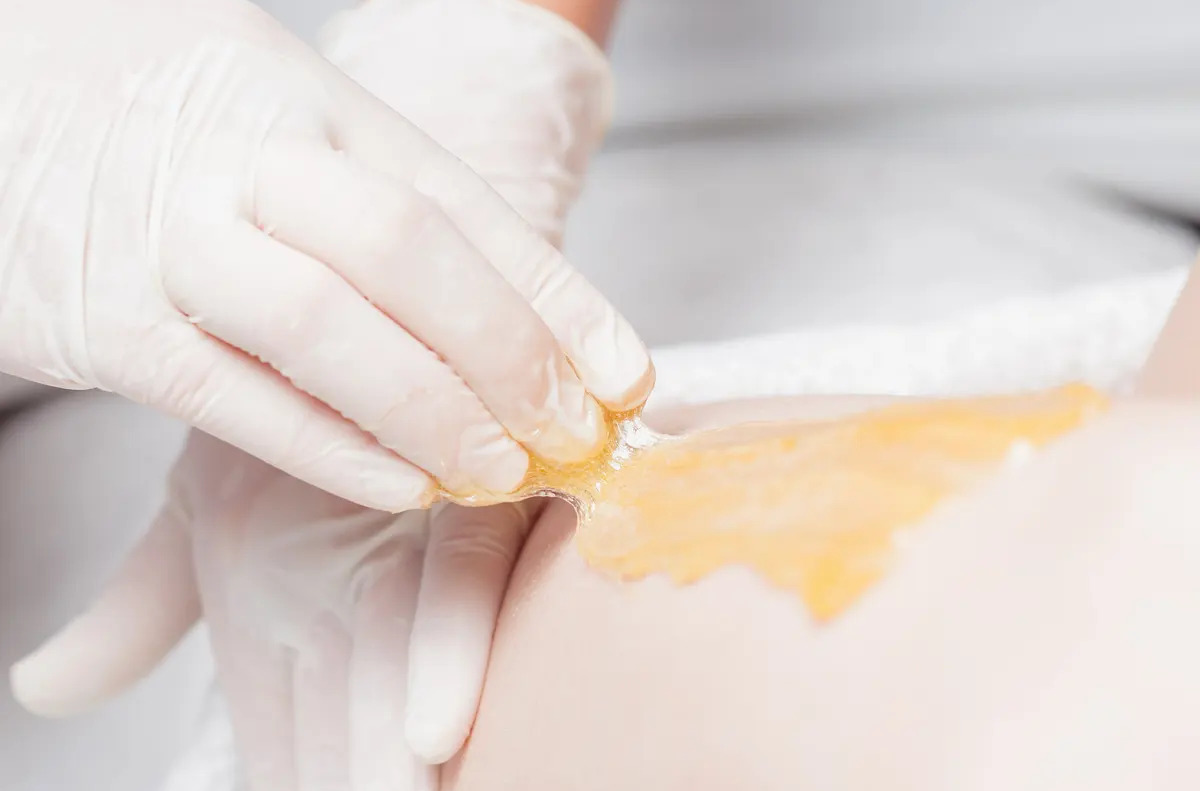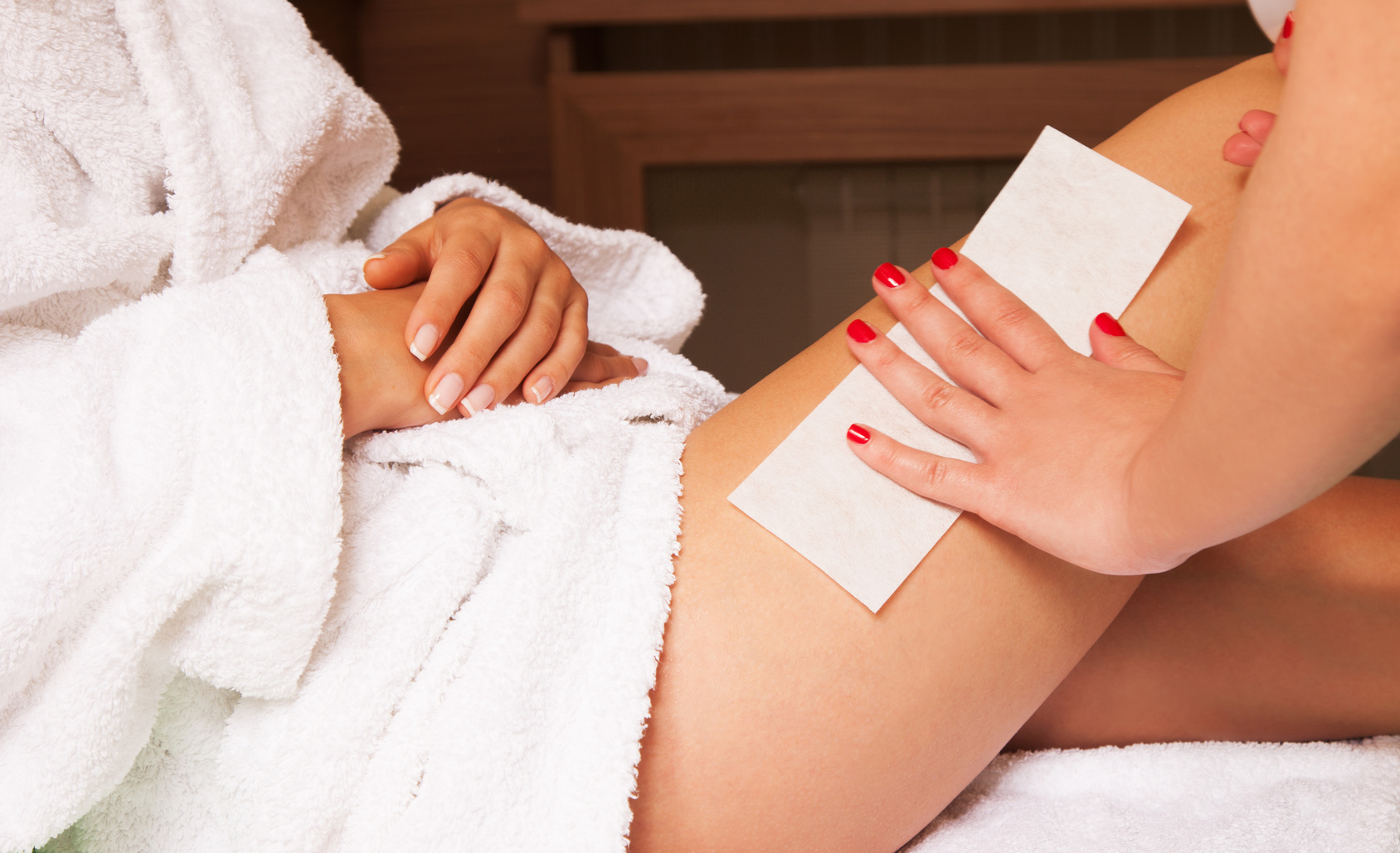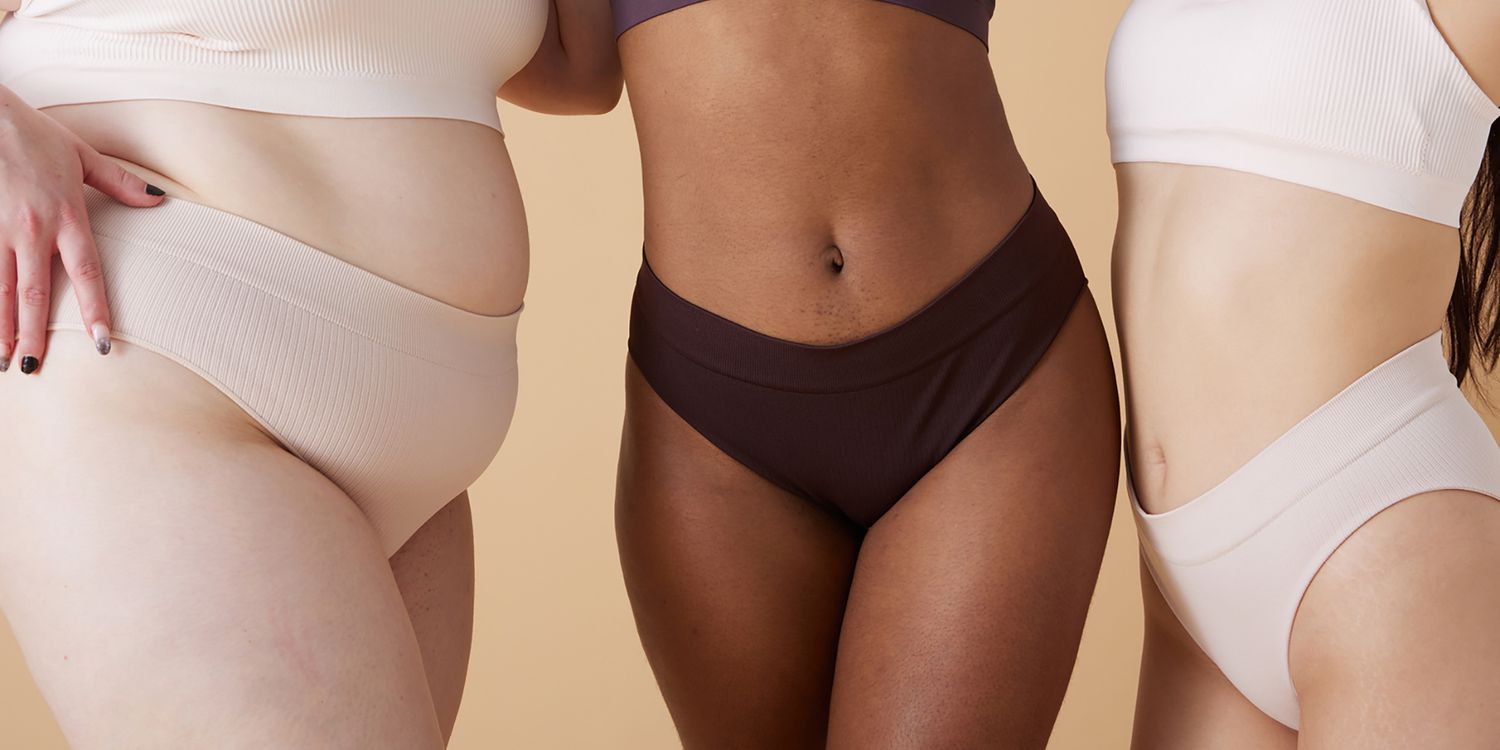Home>Latest Posts>How Often Do You Get A Brazilian Wax
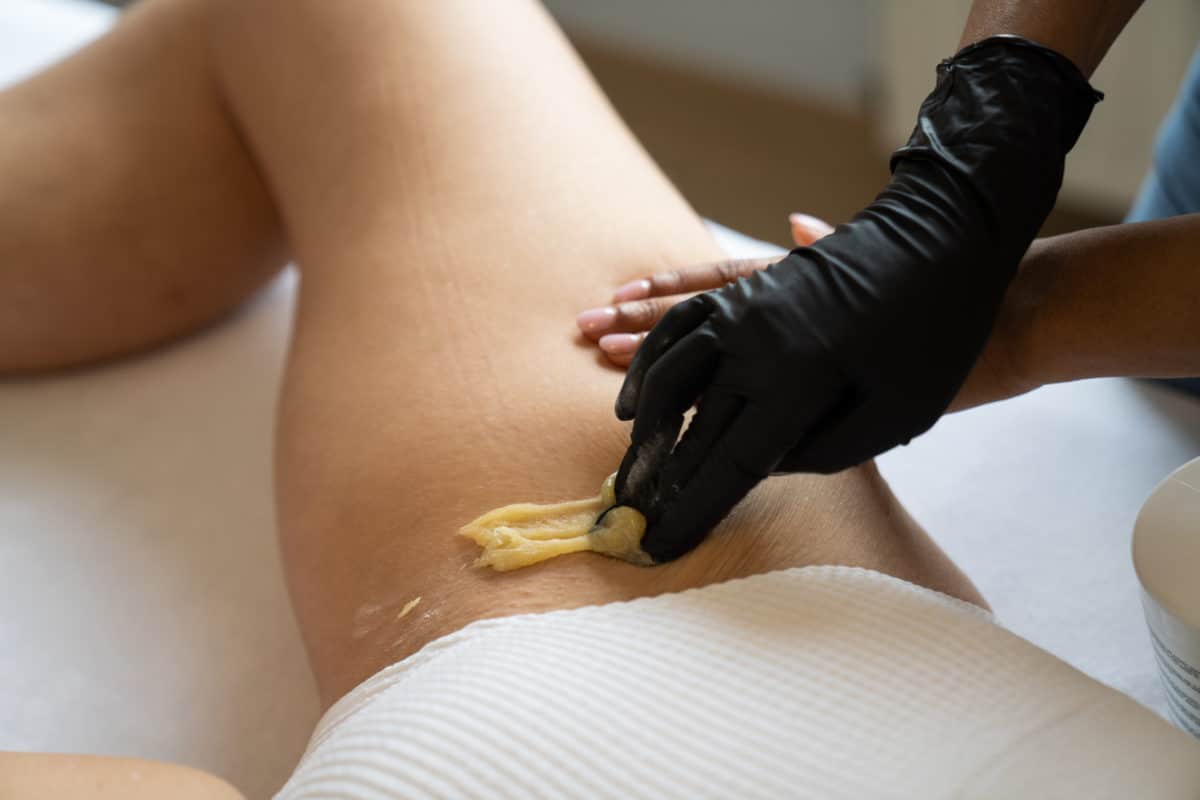

Latest Posts
How Often Do You Get A Brazilian Wax
Modified: August 5, 2023
Discover how often women should get a Brazilian wax and maintain smooth, hair-free skin. Find out the ideal timeframe for this popular hair removal method.
(Many of the links in this article redirect to a specific reviewed product. Your purchase of these products through affiliate links helps to generate commission for Under-tec.com, at no extra cost. Learn more)
Table of Contents
- Introduction
- What is a Brazilian Wax?
- Benefits of Getting a Brazilian Wax
- Preparation for a Brazilian Wax
- Frequency of Getting a Brazilian Wax
- Factors to Consider for Waxing Frequency
- Signs that You Need a Brazilian Wax
- Common Misconceptions about Brazilian Waxing
- Risks and Side Effects of Brazilian Waxing
- Alternatives to Brazilian Waxing
- Conclusion
Introduction
Welcome to the world of Brazilian waxing, a popular hair removal method among women. Whether you’ve heard about it from friends, seen it mentioned in magazines, or stumbled upon it during your online search for hair removal options, you’re likely curious to know more. In this article, we’ll explore everything there is to know about Brazilian waxing – from what it is and its benefits, to how often you should get one and potential side effects.
A Brazilian wax is a type of hair removal technique that involves the complete removal of hair from the pubic area, including the front, labia, and buttocks. Unlike other hair removal methods, such as shaving or using depilatory creams, a Brazilian wax provides longer-lasting results by removing the hair from the root.
The main benefit of getting a Brazilian wax is the smooth and hair-free feeling it provides. Without the presence of unwanted hair, many women feel more confident and comfortable in their own skin. Additionally, the results of a Brazilian wax typically last longer than other hair removal methods, as the regrowth process significantly slows down. This means you can enjoy the benefits of a smooth bikini area for a longer period of time.
Preparing for a Brazilian wax is essential to ensure a successful and comfortable experience. Prior to your appointment, it’s recommended to let your hair grow out to a minimum length of about ¼ inch. This allows the wax to effectively adhere to the hair, making the removal process easier and less painful. It’s also a good idea to exfoliate the area a day or two before your waxing session to remove dead skin cells and prevent ingrown hairs.
Now that we’ve covered the basics, let’s delve into the topic of frequency. How often should you get a Brazilian wax? The answer varies depending on several factors, which we will explore in the following sections. So, let’s keep reading to find out!
What is a Brazilian Wax?
A Brazilian wax is a popular hair removal technique that involves the complete removal of hair from the pubic region, including the front, labia, and buttocks. Unlike traditional bikini waxing, which only removes the hair that would be visible while wearing a swimsuit, a Brazilian wax leaves you completely smooth and hair-free in the bikini area.
During a Brazilian waxing session, a trained esthetician will apply warm wax to the desired areas using a wooden spatula. Then, a cloth or paper strip is pressed onto the wax and quickly pulled off in the opposite direction of hair growth, removing the hair from the root. The process may be repeated multiple times to ensure all hair is effectively removed.
One of the reasons why Brazilian waxing has gained popularity is because of its long-lasting results. Unlike shaving or using depilatory creams, which only remove hair at the surface level, a Brazilian wax removes hair from the root. This means that it takes longer for the hair to grow back, resulting in a smoother bikini area for a longer period of time.
It’s important to note that Brazilian waxing is often associated with some level of discomfort or pain, especially for those who are new to the procedure. The pain is typically short-lived and diminishes with repeated sessions as the hair becomes finer and the skin adapts to the process. Some people find ways to minimize discomfort, such as taking a mild pain reliever before their appointment or applying numbing creams prior to the waxing session.
It’s worth mentioning that Brazilian waxing requires a certain level of trust and confidence in the esthetician performing the procedure. Choosing a reputable salon or spa with experienced and trained professionals is crucial to ensure a safe and effective waxing experience.
Now that you have a better understanding of what a Brazilian wax entails, let’s explore the numerous benefits it offers.
Benefits of Getting a Brazilian Wax
Getting a Brazilian wax offers numerous benefits beyond just having a smooth and hair-free bikini area. Here are some of the key advantages:
- Long-lasting results: Unlike shaving or using depilatory creams, which only provide temporary hair removal, a Brazilian wax offers longer-lasting results. When the hair is removed from the root, it takes longer for it to grow back. This means you can enjoy a smooth bikini area for several weeks before needing to schedule your next waxing session.
- Reduced hair regrowth: With regular Brazilian waxing, you may notice that the hair starts to grow back finer and thinner over time. This is because waxing weakens the hair follicles, leading to slower and sparser regrowth. Some people even find that their hair eventually stops growing back in certain areas, resulting in even longer-lasting results.
- Softer regrowth: When hair grows back after shaving, it tends to feel coarse and prickly. On the other hand, regrowth after a Brazilian wax is typically softer and smoother. This is because waxing removes the hair from the root, ensuring that the regrowth is tapered and finer in texture.
- Less irritation: Shaving can often cause skin irritation, such as razor burn and ingrown hairs. Brazilian waxing eliminates the risk of razor burn and minimizes the chance of ingrown hairs. Additionally, waxing helps exfoliate the skin, leaving it smoother and healthier-looking.
- Improved hygiene: Without the presence of hair in the pubic region, keeping the area clean and hygienic becomes easier. Hair can trap sweat, bacteria, and odor, which can lead to discomfort and unpleasant odors. By removing the hair, you can maintain better personal hygiene in the bikini area.
- Boosted confidence: Many women report feeling more confident and comfortable in their own skin after getting a Brazilian wax. The smooth and hair-free bikini area can enhance self-esteem and make you feel more at ease in intimate situations or while wearing swimsuits and lingerie.
These are just a few of the many benefits that come with getting a Brazilian wax. However, it’s essential to keep in mind that everyone’s experience may vary. Now that you understand the advantages, let’s move on to the next section, which is all about how to prepare for a Brazilian wax.
Preparation for a Brazilian Wax
Proper preparation is key to ensuring a successful and comfortable Brazilian waxing experience. By following these steps, you can minimize discomfort and achieve optimal results.
- Let the hair grow: To ensure that the wax has enough hair to adhere to, it’s recommended to let your hair grow out to a minimum length of about ¼ inch. This allows the wax to effectively grab onto the hair, making the removal process easier and less painful. Avoid trimming or shaving the area for at least two to three weeks before your scheduled waxing session.
- Exfoliate the skin: A day or two before your Brazilian wax, gently exfoliate the area to remove dead skin cells and help prevent ingrown hairs. Use a gentle exfoliating scrub or a dry brush to buff the skin in circular motions. Exfoliating helps to unclog the pores and provides a smoother surface for the wax to adhere to.
- Take a shower before your appointment: Cleansing the area with warm water and a mild, gentle cleanser before your waxing session is essential. This helps to remove any dirt, oils, and bacteria from the skin, ensuring a hygienic environment for the waxing process.
- Avoid moisturizers and oils: On the day of your appointment, refrain from applying any moisturizers, oils, or creams to the bikini area. These products can create a barrier between the wax and the hair, making it less effective. Clean, dry skin allows for better wax adhesion and helps achieve optimal results.
- Wear loose and comfortable clothing: Choose loose-fitting and breathable clothing to wear to your waxing appointment. Tight clothing can cause friction and irritation to the freshly waxed area, while breathable fabrics help prevent sweat buildup. Opting for cotton underwear is particularly recommended, as synthetic materials can trap moisture and lead to discomfort.
- Avoid sun exposure and tanning: It’s best to avoid prolonged sun exposure or tanning beds for at least 24-48 hours before your Brazilian wax. Sunburned or overly tanned skin can be more sensitive and prone to irritation during the waxing process.
- Communicate with your esthetician: Before your session, don’t hesitate to communicate any concerns, allergies, or sensitivities to your esthetician. They will ensure that the products and techniques used are suitable for your skin and address any specific needs you may have.
By following these preparation tips, you can help make your Brazilian waxing experience as smooth and comfortable as possible. Now that you’re ready, let’s move on to the next section, where we’ll discuss how often you should get a Brazilian wax.
Frequency of Getting a Brazilian Wax
The frequency at which you should get a Brazilian wax depends on various factors, including personal preference, hair growth rate, and desired level of maintenance. While there isn’t a one-size-fits-all answer, here are some general guidelines to help you determine how often to schedule your waxing sessions:
- Every 3-4 weeks: For most people, a common recommendation is to schedule a Brazilian wax every 3-4 weeks. This timeframe allows enough time for the hair to grow to the optimal length for waxing, without it becoming too long or difficult to remove. By sticking to this schedule, you can maintain a consistently smooth and groomed bikini area.
- Consider hair growth rate: Keep in mind that different individuals have varied hair growth rates. Some people may find that their hair grows back faster while others may experience slower regrowth. Pay attention to how quickly your hair grows after each waxing session to help determine the best schedule for you. Adjust the frequency accordingly to ensure that you’re getting a wax when the hair has reached the desired length.
- Timing before special events: If you have a special occasion or vacation planned, you may want to schedule your Brazilian wax a few days before the event. This allows time for any potential redness or sensitivity to subside, ensuring that you feel confident and comfortable for the occasion.
- Consistency is key: Consistency in waxing plays a role in achieving optimal results and reducing discomfort. With regular waxing, the hair follicles weaken over time, resulting in finer and sparser regrowth. Strive for consistency in your waxing routine to reap the benefits of longer-lasting results and softer hair regrowth.
- Consult with your esthetician: It’s always a good idea to consult with your esthetician for personalized advice about the frequency of your Brazilian waxing. They can assess your hair growth pattern and recommend the ideal schedule that caters to your specific needs and goals.
Remember that these guidelines serve as a starting point, and you may need to adjust the frequency based on your own preferences and hair growth patterns. It’s important to find a balance between maintaining your desired grooming level and allowing enough time for regrowth before your next waxing session.
Now that you have a better understanding of how often to schedule your Brazilian wax, let’s explore the factors you should consider when determining the waxing frequency.
Factors to Consider for Waxing Frequency
When deciding how often to schedule your Brazilian waxing sessions, it’s important to take into account several factors that can influence the waxing frequency. By considering these factors, you can ensure that you’re making an informed decision that suits your individual needs and preferences. Here are some key factors to consider:
- Hair growth rate: The rate at which your hair grows is a significant factor in determining the frequency of your Brazilian waxing sessions. Some individuals have faster hair regrowth, necessitating more frequent waxing, while others have slower regrowth, allowing for longer intervals between sessions. Observe your hair growth pattern and adjust the waxing frequency accordingly.
- Hair texture and thickness: The texture and thickness of your hair can also influence the waxing frequency. Coarser and thicker hair may require more frequent waxing to maintain the desired smoothness, while finer hair may provide longer-lasting results. Additionally, individuals with finer hair may find it more tolerable to wait longer between waxing sessions.
- Personal preference: Your personal preference and grooming standards play a crucial role in determining your waxing frequency. Some individuals prefer a completely hair-free bikini area at all times and may opt for more frequent sessions to maintain the desired level of smoothness. Others may be content with a shorter regrowth period and may choose less frequent waxing sessions. Consider your preferences and desired grooming routine when establishing your waxing frequency.
- Tolerance for discomfort: The level of discomfort or pain experienced during the Brazilian waxing process can influence how often you choose to schedule your sessions. Some individuals have a higher pain tolerance and may be comfortable with longer intervals between waxing appointments. On the other hand, those who are more sensitive to pain may prefer more frequent sessions to minimize discomfort.
- Seasonal considerations: Seasonal factors, such as summer or vacation periods, can impact your waxing frequency. Many individuals choose to schedule more frequent waxing sessions during summer months when they’re more likely to be wearing swimsuits or engaging in outdoor activities. Similarly, if you have a vacation planned, you might consider scheduling a waxing session right before you leave to ensure you’re hair-free for your trip.
- Skin sensitivity: If you have sensitive skin, you may need to space out your waxing sessions to allow your skin to recover between treatments. Waxing can cause temporary redness or irritation, particularly for those with sensitive skin. Giving your skin enough time to heal and regenerate is crucial to prevent excessive irritation or potential complications.
Keep in mind that these factors are not mutually exclusive, and they may vary from person to person. It’s important to assess your individual circumstances and find the waxing frequency that aligns with your needs and preferences. Consulting with a professional esthetician can provide valuable insights and guidance tailored to your specific situation.
Now that you have a better understanding of the factors to consider, let’s move on to the next section, which highlights signs that indicate it’s time for a Brazilian wax.
Signs that You Need a Brazilian Wax
Knowing when it’s time for a Brazilian wax is crucial for maintaining a well-groomed bikini area. While the frequency of waxing varies from person to person, there are certain signs that indicate it’s time for another waxing session. Here are some common signs to look out for:
- Visible hair growth: The most obvious sign that you’re due for a Brazilian wax is when you start to see visible hair growth in the bikini area. It may appear as stubble or regrowth, indicating that the hair has reached a length suitable for waxing. If you prefer a smooth and hair-free bikini area, it’s time to schedule your next waxing session.
- Noticeable discomfort: As the hair starts to grow, you may begin to feel discomfort or irritation due to the texture of the regrowth. The stubble or prickly sensation from shaved regrowth can be alleviated by getting a Brazilian wax. If you start feeling uncomfortable, it’s a clear indication that you should book your next waxing appointment.
- Reduced smoothness: After a Brazilian wax, you’ll experience a period of silky smoothness in the bikini area. As the hair starts to grow back, you may notice a decrease in smoothness, and the bikini area may feel rough or stubbly. If you’re longing for that smooth feeling again, it’s time for another waxing session.
- Ingrown hairs: If you start experiencing ingrown hairs – when the hair curls back into the skin instead of growing straight out – it’s a sign that you need a Brazilian wax. Waxing helps remove the hair from the root, reducing the occurrence of ingrown hairs and keeping the bikini area smoother and clearer.
- Personal preference: Ultimately, the decision to get a Brazilian wax is a personal one. If you have a specific grooming preference and enjoy the feeling of a hair-free bikini area, listen to your own desires and schedule a waxing session whenever you feel it’s necessary.
It’s important to remember that these signs are general indicators, and the timing of your waxing sessions will depend on your personal preference and hair growth rate. Some individuals prefer to maintain a consistent waxing schedule, while others may wait for more visible signs of hair growth. Additionally, consulting with your esthetician can provide valuable insights and help you determine the best timing for your waxing appointments.
Now that you’re aware of the signs that indicate it’s time for a Brazilian wax, let’s address some common misconceptions about Brazilian waxing.
Common Misconceptions about Brazilian Waxing
Brazilian waxing is surrounded by various misconceptions and myths that can deter people from trying it or cause unnecessary concerns. Let’s debunk some of these misconceptions to provide you with accurate information about Brazilian waxing:
- It’s extremely painful: While Brazilian waxing is not entirely painless, it’s often exaggerated as being excruciatingly painful. The level of discomfort varies from person to person, and it generally becomes less intense with each subsequent waxing session. Additionally, skilled estheticians employ techniques to minimize pain, such as using high-quality wax and applying methods that reduce pulling on the skin.
- It causes permanent hair removal: One common misconception is that Brazilian waxing leads to permanent hair removal. However, this is not the case. Brazilian waxing removes hair from the root, resulting in slower and finer regrowth, but it does not permanently stop hair growth. You will still need regular waxing sessions to maintain the desired hair-free bikini area.
- Waxing causes more ingrown hairs: While ingrown hairs can occur after waxing, they are not inherently caused by the waxing process itself. In fact, waxing can help reduce the occurrence of ingrown hairs compared to shaving. Proper exfoliation and aftercare, as recommended by your esthetician, can minimize the risk of ingrown hairs by keeping the follicles clear and allowing hair to grow freely.
- Waxing leads to loose or sagging skin: Another common misconception is that waxing causes the skin to become loose or saggy over time. This is not true. Waxing only removes hair from the surface and does not affect the skin’s elasticity or firmness. However, it’s important to seek professional waxing services to ensure the proper technique is used to minimize skin irritation and damage.
- You can’t get a Brazilian wax during your period: It’s a widespread myth that you cannot get a Brazilian wax while menstruating. In reality, many salons and spas offer waxing services during menstruation, as long as you wear a tampon or other menstrual hygiene products for cleanliness and comfort. However, personal preferences and comfort levels may vary, so it’s always best to check with your salon to determine their specific policies.
Understanding and debunking these misconceptions can help alleviate any concerns or fears you may have about Brazilian waxing. It’s important to seek information from reputable sources and communicate openly with your esthetician to address any specific concerns or questions you may have.
Now that we’ve cleared up these misconceptions, let’s explore the potential risks and side effects of Brazilian waxing.
Risks and Side Effects of Brazilian Waxing
While Brazilian waxing is a generally safe and popular hair removal method, it’s important to be aware of the potential risks and side effects. Understanding these factors can help you make an informed decision and take necessary precautions. Here are some of the common risks and side effects associated with Brazilian waxing:
- Redness and irritation: It’s common to experience temporary redness and irritation after a Brazilian wax. This is a normal reaction to the removal of hair from the root and usually subsides within a few hours or days. Applying a soothing lotion or aloe vera gel can help calm the skin and reduce inflammation.
- Ingrown hairs: Although waxing can help reduce the occurrence of ingrown hairs, they can still happen. Ingrown hairs occur when the hair curls back into the skin instead of growing straight out. Regular exfoliation, as recommended by your esthetician, can help prevent and minimize the appearance of ingrown hairs.
- Skin sensitivity: Waxing may cause temporary skin sensitivity, especially for those with sensitive skin. The pulling action of the wax can temporarily irritate the skin, leading to discomfort. However, this typically subsides within a short period. Applying a gentle post-waxing lotion or hydrocortisone cream can help soothe the skin and alleviate any sensitivity.
- Bruising or burns: In rare cases, improper waxing techniques or overheated wax can result in bruising or burns. This is why it’s crucial to choose a reputable salon or spa with trained and experienced estheticians. They will ensure the wax is at the appropriate temperature and use proper techniques to minimize the risk of injury.
- Allergic reactions: It’s possible to have an allergic reaction to the wax or other products used during the waxing process. If you have a known allergy to any ingredients, such as certain types of wax or pre/post-waxing products, be sure to inform your esthetician beforehand. They can suggest alternative products that are suitable for your skin.
- Infection: While rare, there is a minimal risk of infection after a Brazilian wax if proper hygiene practices are not followed. To minimize the risk, ensure that the esthetician uses clean and sanitized tools, and avoid touching the waxed area with unclean hands. It’s also essential to follow any post-waxing guidelines provided by your esthetician to keep the area clean and prevent infection.
While the aforementioned risks and side effects are possible, they can generally be minimized by choosing a reputable esthetician, following proper aftercare instructions, and maintaining good hygiene practices. If you have any concerns or experience severe or prolonged side effects after a Brazilian wax, it’s advisable to consult with a healthcare professional.
Now that you’re aware of the potential risks and side effects, let’s explore some alternatives to Brazilian waxing for hair removal.
Alternatives to Brazilian Waxing
If Brazilian waxing is not your preferred method of hair removal or if you’re looking for alternative options, there are several alternatives to consider. Here are some popular alternatives to Brazilian waxing:
- Shaving: Shaving is one of the most commonly used methods for removing hair in the bikini area. It is convenient, inexpensive, and can be done at home. However, the results are temporary, and regrowth can appear within a few days. Shaving can also cause irritation, ingrown hairs, and coarser regrowth.
- Depilatory creams: Depilatory creams, often referred to as hair removal creams, are topical products that dissolve the hair at the surface level. These creams are widely available and offer a painless and quick hair removal option. However, they can sometimes cause skin irritation, and the results may not be as long-lasting as waxing.
- Laser hair removal: Laser hair removal is a long-term hair reduction method that uses laser technology to target and destroy hair follicles. This treatment is typically carried out by trained professionals and requires multiple sessions for optimal results. Laser hair removal offers more permanent hair reduction compared to waxing, but it can be more expensive and may not be suitable for everyone.
- Epilation: Epilators are devices that mechanically remove hair from the root using rotating or oscillating tweezers. They work similarly to waxing but without the need for wax. While epilation can provide longer-lasting results, it can be uncomfortable and may cause skin redness and irritation.
- Sugaring: Sugaring is a natural hair removal method that involves applying a sugar-based paste to the skin and removing it along with the hair. It is similar to waxing but uses a different type of sugar paste. Sugaring is known for being gentler on the skin and less painful than traditional waxing. However, the results and regrowth may vary depending on individual hair growth patterns.
- Threading: Threading is a technique that uses a looped thread to remove hair from the follicle. It is commonly used for shaping eyebrows, but it can also be used for facial and body hair removal, including the bikini area. Threading offers precise hair removal and is suitable for those with sensitive skin. However, threading can be time-consuming and may require regular touch-ups to maintain the desired results.
When considering an alternative to Brazilian waxing, it’s important to weigh the pros and cons of each method and choose one that aligns with your preferences, budget, and hair removal goals. Additionally, consulting with a professional esthetician can provide valuable insights and help you select the most suitable alternative for your needs.
Now that you’re familiar with some alternatives, let’s conclude this article.
Conclusion
Brazilian waxing is a popular hair removal option for those seeking a smooth and hair-free bikini area. By understanding what a Brazilian wax entails and the various benefits it offers, you can make an informed decision about whether it’s the right choice for you.
When it comes to waxing frequency, factors such as hair growth rate, personal preference, and seasonal considerations play a role in determining how often you should schedule your sessions. It’s important to find a waxing routine that aligns with your grooming preferences and goals.
While Brazilian waxing comes with potential risks and side effects, such as temporary redness, irritation, and ingrown hairs, these can be minimized by choosing a skilled esthetician and following proper aftercare instructions. It’s essential to prioritize hygiene and communicate any concerns or allergies with your esthetician to ensure a safe and comfortable experience.
If Brazilian waxing doesn’t suit your preferences, there are alternative hair removal options to consider, such as shaving, depilatory creams, laser hair removal, epilation, sugaring, or threading. Each method has its own pros and cons, so it’s important to explore these options to find the best fit for you.
Before proceeding with any hair removal method, whether it’s Brazilian waxing or an alternative, it’s advisable to consult with a professional esthetician. They can provide personalized advice, recommendations, and address any concerns you may have.
Remember, the choice of hair removal method is ultimately a personal one. Consider your preferences, tolerance for discomfort, and desired grooming routine to find the approach that suits you best. Whether you choose Brazilian waxing or an alternative method, prioritize your comfort, safety, and confidence in your decision.
Now that you’re equipped with knowledge about Brazilian waxing and its alternatives, you’re ready to make an informed choice about your hair removal journey. Embrace the option that makes you feel most comfortable, confident, and satisfied with your overall grooming routine.



